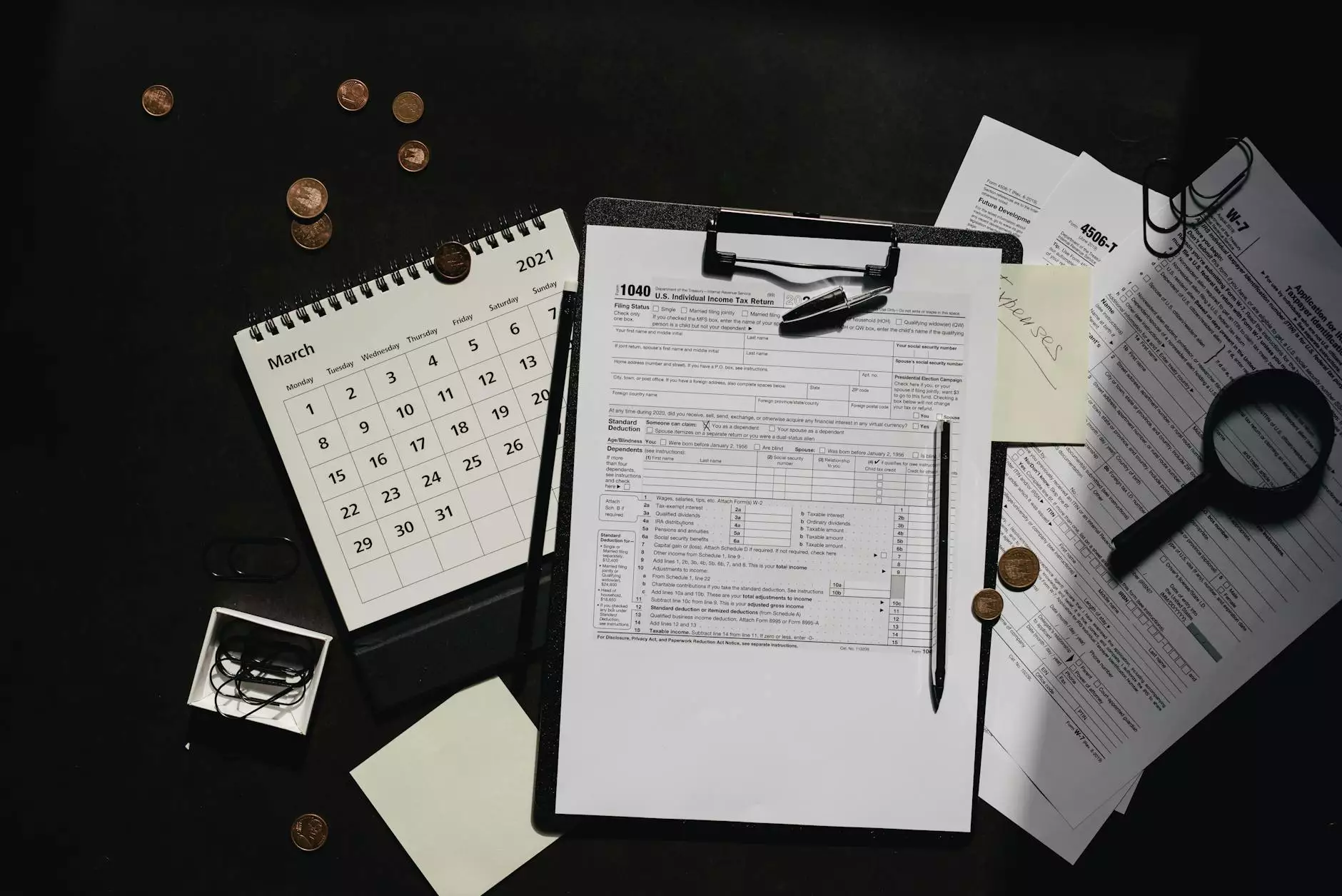Understanding CCA in Accounting: A Comprehensive Guide

Capital Cost Allowance (CCA) is a crucial concept in the landscape of accounting, particularly when it comes to financial management and tax planning. As businesses strive to optimize their financial results and mitigate tax liabilities, understanding CCA can lead to significant benefits. In this guide, we will explore what CCA is, its relevance in accounting, how it operates, and the strategies to leverage it effectively.
What is CCA?
CCA, or Capital Cost Allowance, refers to the depreciation deduction available in Canada for the wear and tear on capital assets. It's a method that allows businesses to recover the cost of capital investments over time. While CCA is specific to Canadian tax law, similar concepts exist in other jurisdictions under different names, such as depreciation in the United States tax code.
The Importance of CCA in Accounting
Understanding CCA is imperative for any business owner or accountant. Here are a few reasons why:
- Tax Efficiency: By using CCA wisely, businesses can significantly reduce their taxable income, which in turn lowers tax liabilities.
- Cost Recovery: CCA allows businesses to recover the costs associated with their capital assets over their useful lives, thus improving cash flow.
- Financial Planning: Accurate recording and reporting of CCA can aid in financial forecasting and planning, enabling better strategic decisions.
How CCA Works
At the core of CCA is the concept of depreciation. Depreciation reflects the reduction in value of an asset as it ages. CCA allows businesses to deduct a portion of the capital cost of an asset from their taxable income over a specified period.
To calculate CCA, businesses categorize their assets into classes, each with a specific depreciation rate determined by the Canada Revenue Agency (CRA). For instance:
- Class 1 (generally buildings): 4% per year
- Class 8 (equipment and machinery): 20% per year
- Class 10 (vehicles): 30% per year
The Calculation Process
The calculation of CCA involves several steps:
- Identify Eligible Assets: Only certain assets qualify for CCA.
- Determine the Class: Assign the asset to the correct CCA class based on its nature.
- Apply the CCA Rate: Use the prescribed rate for that class to calculate the allowable deduction for the year.
- Claim the CCA: Report the calculated CCA deduction on your tax return.
Eligible Assets for CCA Deduction
In order to benefit from CCA in accounting, it is essential to know which assets are eligible for this deduction. Here are some common categories of assets:
- Buildings: Generally eligible for a CCA class of depreciation based on their type and use.
- Equipment: This includes machinery, computers, and tools that assist in business operations.
- Vehicles: Cars, trucks, and other vehicles purchased for business purposes.
- Furniture and Fixtures: Items such as desks, chairs, and cabinetry used within the business premises.
Common Misconceptions About CCA
Despite its advantages, CCA comes with misconceptions that can confuse business owners. Here are a few myths debunked:
- CCA is Optional: Some believe they can choose whether to file for CCA; however, it is required if you want to recoup the capital costs of assets.
- CCA Always Benefits: While CCA provides tax relief, claiming too much in a prior year can lead to a lower allowable deduction in subsequent years.
- Only New Assets Qualify: Both new and used assets can qualify for CCA as long as they are used for business purposes.
Strategic Use of CCA in Business Planning
To maximize the advantages of CCA, business owners should adopt strategic approaches. Here are some recommendations:
- Timing Asset Purchases: Timing when to buy assets can impact your CCA deductions; understanding the tax year end can help optimize deductions.
- Claiming CCA Consistently: Regularly claiming CCA can lead to consistent tax savings every year.
- Considering Capital Cost Trends: Keeping an eye on asset values and technological advancements can help determine when to replace old equipment.
Tracking CCA: An Essential Aspect of Accounting
Properly tracking CCA is a vital part of your accounting practices. Here are a few key steps:
- Maintain Detailed Records: Keep meticulous records of all asset purchases, including dates, costs, and receipts.
- Review CCA Annually: Conduct annual reviews of your assets to ensure that your CCA claims are accurate and reflect current ownership and condition.
- Work with Professionals: Consulting with a tax advisor or accountant can provide you with insights on optimizing CCA claims and ensure compliance with tax regulations.
Conclusion: The Power of CCA in Accounting
In conclusion, CCA represents a powerful tool for business owners looking to enhance their financial performance. By understanding the ins and outs of CCA in accounting, businesses can strategically reduce their tax burdens, recover capital costs more effectively, and improve overall cash flow. Whether through effective asset management or strategic timing of capital investments, the impact of CCA can be significant. For tailored advice and expertise, consider reaching out to professionals at Tax Accountant IDM, where we specialize in providing financial services, accounting, and tax services designed to maximize your business’s potential.









